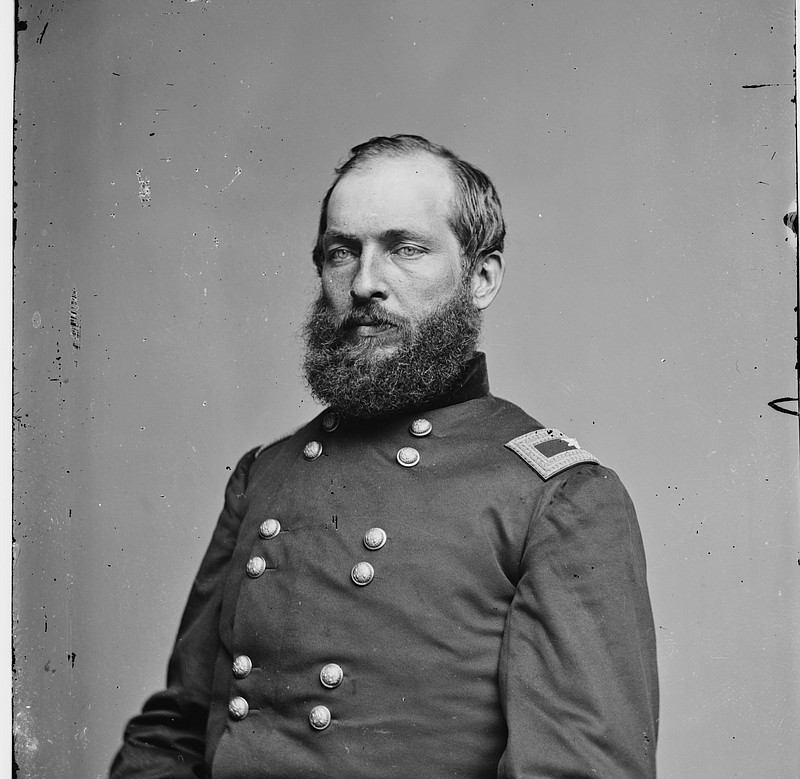For Brigadier Gen. James A. Garfield, the February 1863 journey to Murfreesboro, Tenn., was a long time coming.
Born in 1831, Garfield was raised in humble circumstances on an Ohio farm by his widowed mother and elder brother. He was a bear of a man, standing over 6 feet tall and weighing 200 pounds.
Working his way through school he graduated from Williams College in Massachusetts. He became a lawyer and then an Ohio state senator.
In the summer of 1861, he received his commission as lieutenant colonel of the 42nd Ohio Volunteer Infantry. Five months later, he was promoted to brigadier general.
In January 1863, Gen. William Rosecrans, commander of the Army of the Cumberland, telegraphed military headquarters. His chief of staff had recently been killed in battle and a replacement was needed.
Garfield accepted the position. Dodging Confederate cavalry, he arrived at headquarters in Murfreesboro. He was one of the early Union officers to want to carry the war aggressively to the south.
The new chief of staff worked at a great pace. He wrote numerous orders and did his part to get the army ready for battle. He believed the Union Army was in fine shape for a fight, but Rosecrans showed no indication of any general movement.
Rosecrans received telegrams from Washington urging him to advance. He called a meeting of his field commanders asking for a vote on whether to mount an attack. The results were a resounding no against any kind of campaign. This action did not deter Garfield. He submitted a proposal to Rosecrans refuting all of the negative opinions. The commander agreed, ordering an attack on the Rebel position at Tullahoma.
The campaign was a grand success. The Confederates fled in confusion, allowing the Union Army to camp on the outskirts of Chattanooga. Two months later the Union Army moved on the key Rebel city. Rosecrans outmaneuvered the Confederates, taking the city with relative ease.
Flushed with success he disposed of his usual caution and ordered his army into eastern Georgia. Garfield received intelligence that Confederate reinforcements were about to gather in the area. Rosecrans now realized his scattered army was in great jeopardy. He ordered his commanders to turn back and consolidate near Chickamauga Creek.
On Sept. 19, the two armies met at the Battle of Chickamauga. Each side delivered heavy blows. Casualties mounted at a frightening rate. By nightfall there was no clear-cut winner, just thousands of dead and wounded.
The next morning revealed a large gap in the center of the Union line. Through a series of confused orders, a division was pulled out of line and moved to the left flank. An attack by Confederate Gen. James Longstreet shattered the center and right of the Union defenses. Only Union Gen. George Thomas and his left wing continued the fight.
Garfield was on his way to Chattanooga when he noticed orderly firing coming from Thomas' position. He wheeled his horse and rode back to the battle. Garfield managed to find Thomas and stay on the field for the entire battle. The Union left held fast until darkness when they fell back to Chattanooga.
For his bravery in returning to the fight, Garfield received a promotion to major general. Some historians regard his memoirs as glorifying his actions for political purposes.
On March 4, 1881, he became the 20th president of the United States. He did assert presidential authority especially in appointing several African-Americans to prominent federal positions but had little time for any major initiatives.
On July 2, he was on the way to give a speech at his alma mater, Williams College, when he was assassinated by a disgruntled office seeker. He served just slightly over six months in the White House.
Scott Longert is a park guide at the James A. Garfield National Historic Site. He specializes in Civil War history and the military career of Gen. Garfield. For more, visit Chattahistoricalassoc.org or call Lavonne Jolley 423-886 -2090.
